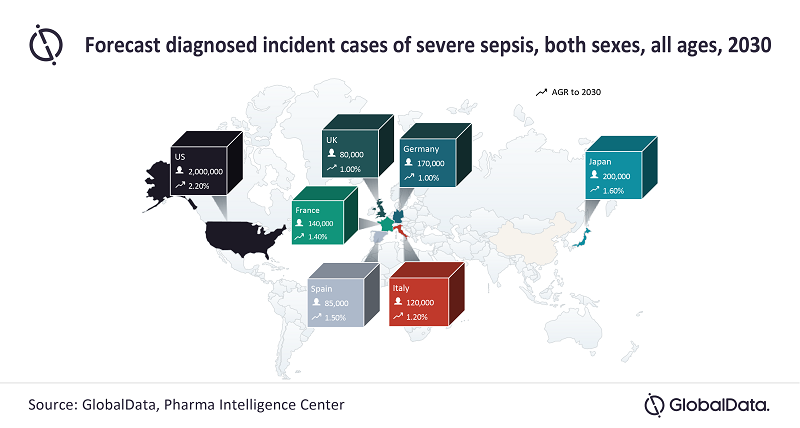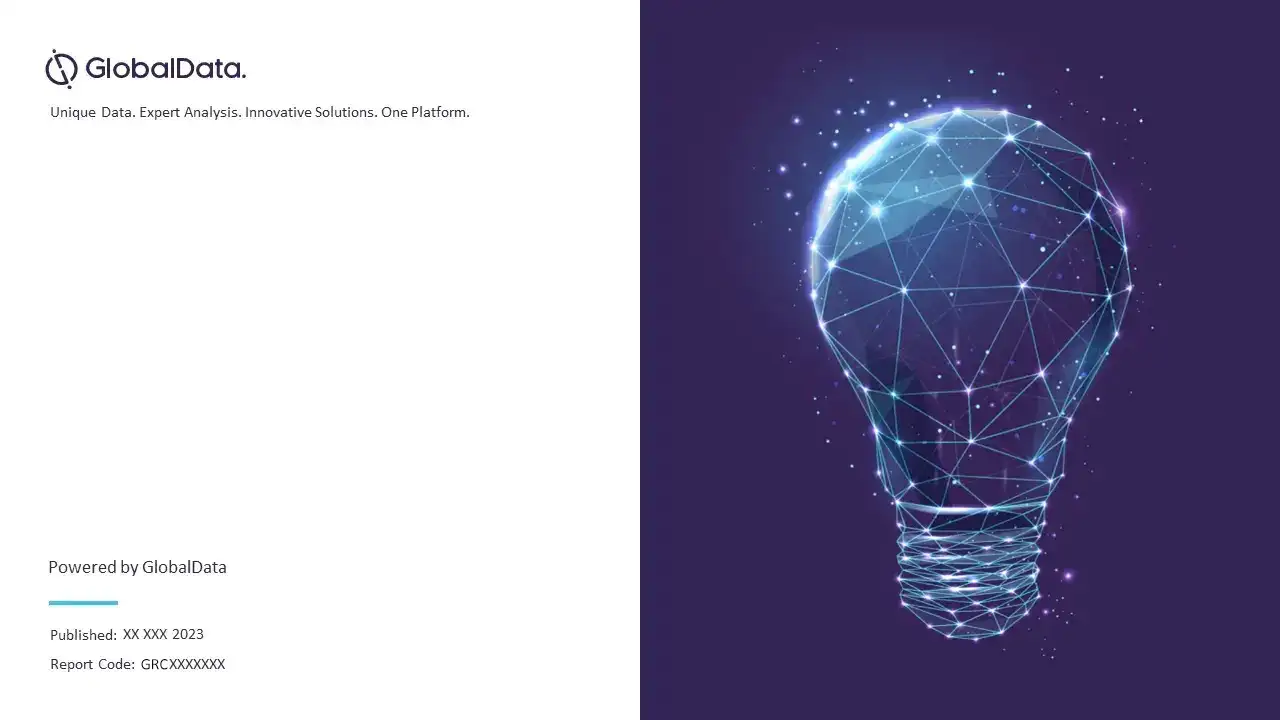Severe Sepsis and Septic Shock – Epidemiology Forecast to 2030
Powered by ![]()
All the vital news, analysis, and commentary curated by our industry experts.
The burden of diagnosed incident cases of severe sepsis is expected to increase at an annual growth rate (AGR) of 2%, from around 2.3 million cases in 2020 to 2.8 million in 2030 in the seven major markets (7MM*). This report reveals that the increase is partly attributed to the moderately rising trend in incidence in the 7MM, combined with underlying demographic changes in the respective markets.

Bishal Bhandari, PhD, Senior Epidemiologist at GlobalData, comments: “There will be an increasing trend of diagnosed incident cases of severe sepsis in all *7MM in the next 10 years, driven primarily by the growing aging population, as well as individuals with more comorbid conditions that worsen susceptibility, and increasing resistance to antibiotics by the different kinds of bacteria.”
In the 7MM, according to GlobalData, more than half of diagnosed incident cases of severe sepsis had two or more organ dysfunction in 2020.
Bhandari adds: “Severe sepsis usually affects multiple organs such as the liver, kidney, heart and lungs, and thus necessitates early diagnosis to prevent multiple organ dysfunction, which can be life-threatening.
“The aging population with multiple comorbidities suggests that the number of deaths in people with severe sepsis will continue to rise even with improvements in severe sepsis treatment.”
*7MM: The US, France, Germany, Italy, Spain, the UK, and Japan
Scope
Severe sepsis and septic shock are life-threatening conditions with a very high mortality rate. Severe sepsis is defined as life-threatening organ dysfunction caused by a dysregulated host response to infection criteria. Septic shock is defined as a state of acute circulatory failure characterized by persistent arterial hypotension that cannot be successfully rescued by fluid resuscitation criteria. A constellation of clinical, laboratory, physiologic, and microbiologic data is required for the diagnosis of severe sepsis and septic shock.
GlobalData epidemiologists used age- and sex-specific diagnosed incidence rates to forecast the diagnosed incident cases, taking into account the significant relationship between age and Severe sepsis. GlobalData epidemiologists applied country-specific incidence rates of severe sepsis and septic shock wherever available, to each country’s population to obtain the number of estimated diagnosed incident cases.
The following data describes epidemiology of severe sepsis and septic shock cases. In 2020, the 7MM had 2,344,143 diagnosed incident cases of severe sepsis. This is expected to increase to 2,794,568 diagnosed incident cases by 2030, at an Annual Growth Rate (AGR) of 1.92%. In the 7MM, the diagnosed incident cases of septic shock will increase from 559,513 cases in 2020 to 664,991 cases in 2030, at an AGR of 1.89%. This increase is partly attributed to the moderately rising trend in incidence in the 7MM, combined with underlying demographic changes in the respective markets. The early diagnosis and development of more effective therapies would improve survival from severe sepsis and septic shock.
- Severe Sepsis and Septic Shock Epidemiology Report and Model provide an overview of the risk factors and global trends of severe sepsis and septic shock in the seven major markets (7MM: US, France, Germany, Italy, Spain, UK, and Japan).
- This report also includes a 10-year epidemiological forecast for the following segmentations in all ages across the 7MM: diagnosed incident cases of severe sepsis, and septic shock. Diagnosed incident cases of severe sepsis and septic shock are further segmented by causative agents and organ dysfunction. Additionally, GlobalData epidemiologists provide a forecast for the in-hospital mortality cases of severe sepsis and septic shock.
- The Severe Sepsis and Septic Shock Epidemiology Report and Model were written and developed by Masters- and PhD-level epidemiologists.
- The Epidemiology Report is in-depth, high quality, transparent and market-driven, providing expert analysis of disease trends in the 7MM.
- The Epidemiology Model is easy to navigate, interactive with dashboards, and epidemiology-based with transparent and consistent methodologies. Moreover, the model supports data presented in the report and showcases disease trends over a 10-year forecast period using reputable sources.
Reasons to Buy
The Severe Sepsis and Septic Shock epidemiology series will allow you to:
- Develop business strategies by understanding the trends shaping and driving the global severe sepsis and septic shock market.
- Quantify patient populations in the global severe sepsis and septic shock market to improve product design, pricing, and launch plans.
- Organize sales and marketing efforts by identifying the causative agents that present the best opportunities for therapeutics in each of the markets covered.
- Understand magnitude of organ dysfunction in severe sepsis and septic shock in these markets.
Table of Contents
Table
Figures
Frequently asked questions
Get in touch to find out about multi-purchase discounts
reportstore@globaldata.com
Tel +44 20 7947 2745
Every customer’s requirement is unique. With over 220,000 construction projects tracked, we can create a tailored dataset for you based on the types of projects you are looking for. Please get in touch with your specific requirements and we can send you a quote.
Related reports
View more Infectious Disease reports








